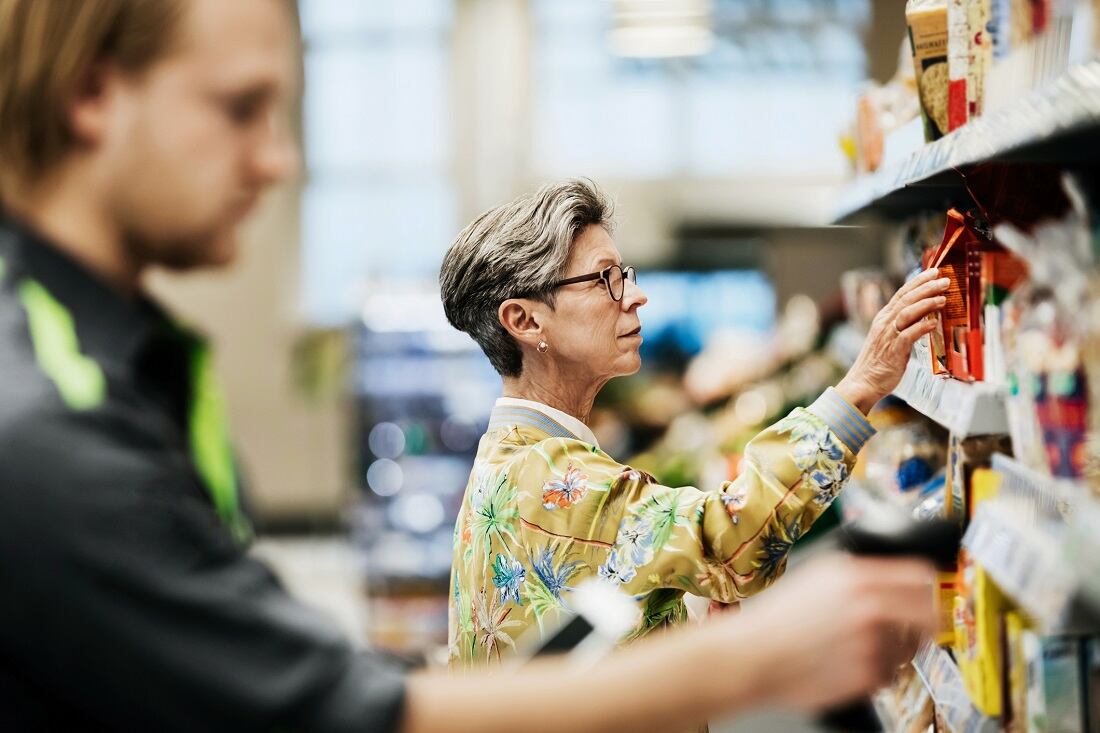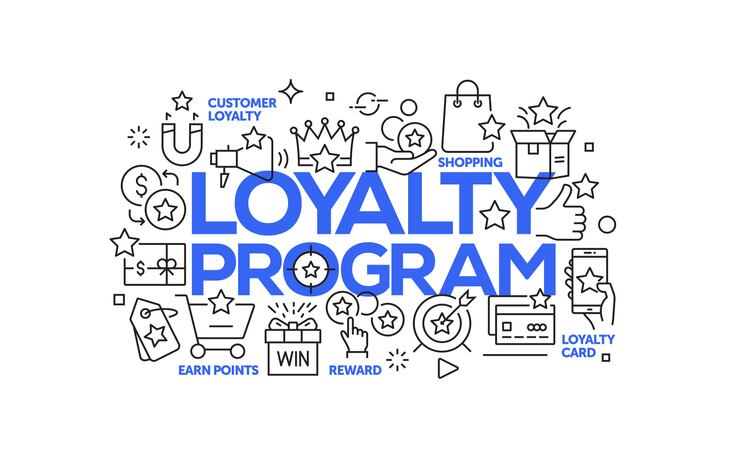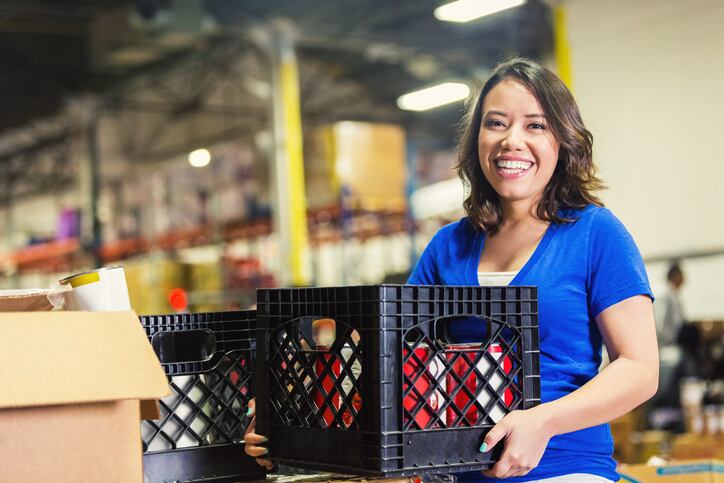According to the survey* led by The Feedback Group’s Grocery Shopper Intention Monitor, 40% of shoppers surveyed said they plan to shop more often in store in 2021 than those who said they plan to shop less (9%).
"As a result, stores need to provide the best possible experience to welcome food shoppers back and retain them," said The Feedback Group in its report.
The strong trend back to in-store shopping held true across generations and age groups: 58% of Gen Z and 49% of Millennials said they expect to shop at stores more often (vs. 14% and 15%, respectively, who said they would be shopping in-store less often). Baby boomers were also more likely to return to in-store shopping in 2021 (32% more vs. 6% who said they would be less likely to return to in-store shopping).
Stores with the Highest Expected Shopping Ratio include Walmart with the highest expected shopping ratio (34% more / 11% less), followed by Costco (33% more / 16% less), dollar stores (29% more / 12% less) and grocery stores, including chains and independents (28% more / 11% less).
When looking at rural shoppers, the stores with the highest expected in-store shopping ratio are Aldi, dollar stores, Sprouts, Walmart, and Trader Joe’s. Among Boomers, Meijer, Trader Joe’s, Winco, Aldi, and Costco show the highest expected shopping ratios, according to The Feedback Group’s findings.
*The study is based on a nationally representative sample of 2,250 respondents who shopped in-store and/or online for food and groceries over the past 30 days.
Online shopping
While The Feedback Group’s findings may seem like many consumers were just biding their time until they could go back to in-store and mask-free shopping, The Feedback Group also found that grocery e-commerce has experienced a sustained lift to sales.
According to its survey, two times as many shoppers indicate they will shop more online (40%) versus less (20%) in 2021. The online expected shopping ratio is strongest among urban shoppers (54% more / 17% less) and Millennials (57% more / 19% less), while the youngest generation, Gen Z, has a flat expected online shopping ratio.
In terms of which retailers are leading the e-commerce charge, Whole Foods and Amazon Fresh showed the strongest expected online shopper ratio turnout, followed by Walmart.com, Target.com, and Costco.com.
Stores with the top expected shopping ratio among Millennials are led by Whole Foods (52% surveyed they would shop online at the retailer in 2021 vs. 12% who were less likely to do so), followed by Walmart.com (44% more likely vs. 16% less likely), Target.com, Amazon Fresh, Costco.com, and Instacart. Among urban shoppers, Whole Foods again comes out on top, followed by Walmart.com, Amazon Fresh, Target.com, and Fresh Direct.
“As the findings illustrate, Amazon, both with Whole Foods and Amazon Fresh, appear to have the greatest overall momentum in terms of shoppers expecting to use their online services more often,” said Doug Madenberg, Feedback Group principal.
“Whole Foods also resonates the strongest among urban and Millennial shoppers, and Amazon Fresh also places in the top group of stores among these shoppers, along with Walmart, Target, Costco, Instacart and Fresh Direct. Absent from the top group are grocery stores, showing that work remains for the channel to continue to strengthen online offerings,” noted Madenberg.
The rise of food dollar store food shopping
Approximately four in ten shoppers surveyed that they shop at a dollar store every two weeks or more frequently.
Among those who shop a dollar store at least once every few months, about three in ten shop for food or grocery items every two weeks or more often, driven by the convenience of the store/location (57%), price (54%), quality (43%) and for items or brands they like (41%). The categories mentioned as most purchased were chips/salty snacks (65%), candy (62%), cookies/crackers (60%), beverages (59%), and canned goods (52%).
“Since dollar stores had one of the higher expected shopping ratios for shoppers planning to shop in a store, it is clear that convenient store locations and price are appealing to dollar store shoppers for several product categories,” added Brian Numainville, principal at The Feedback Group.
“Although fresh categories like meat and fruits/vegetables presently show the lowest purchasing levels, as reported by shoppers, these categories may grow as dollar stores continue to expand their offerings.”




